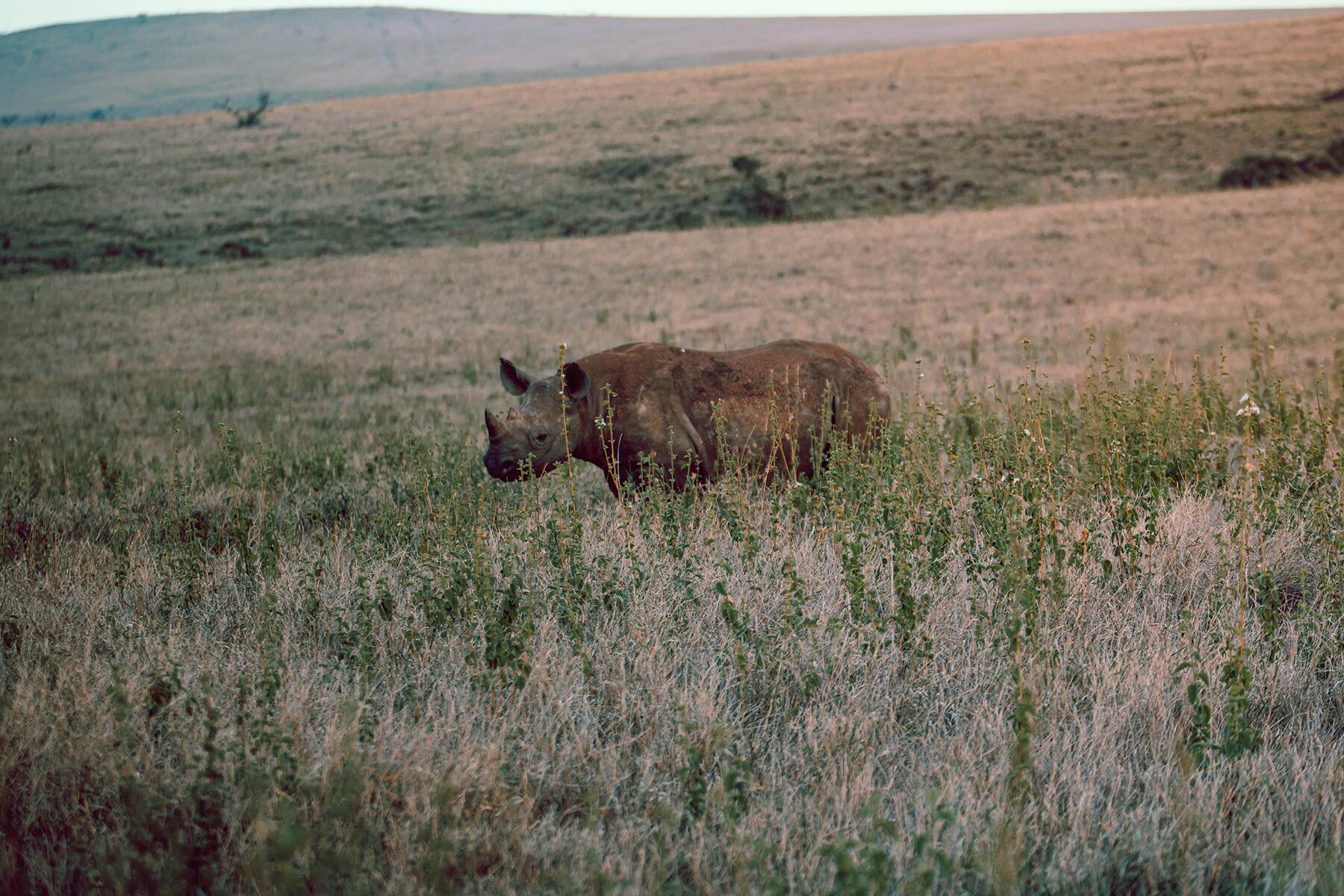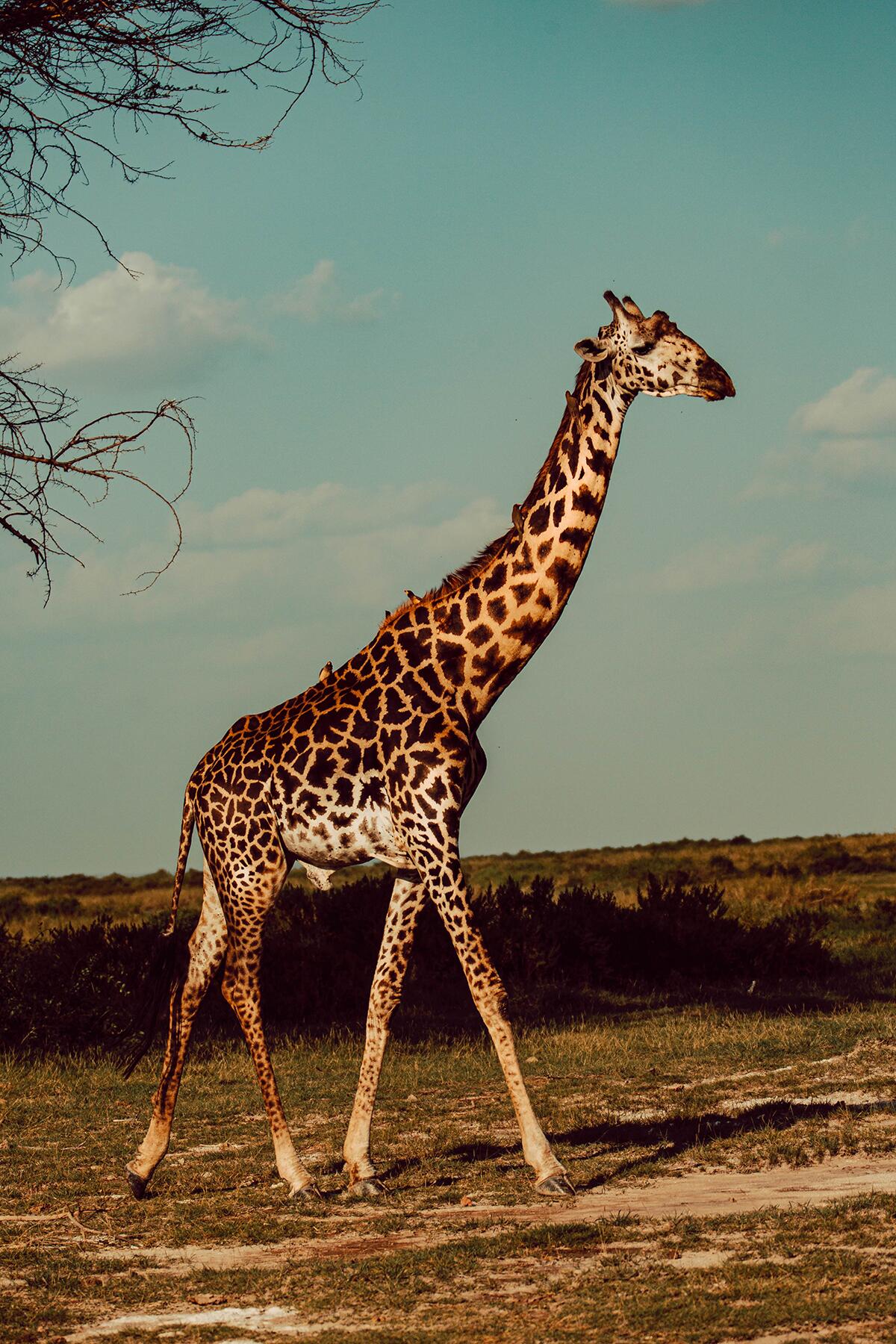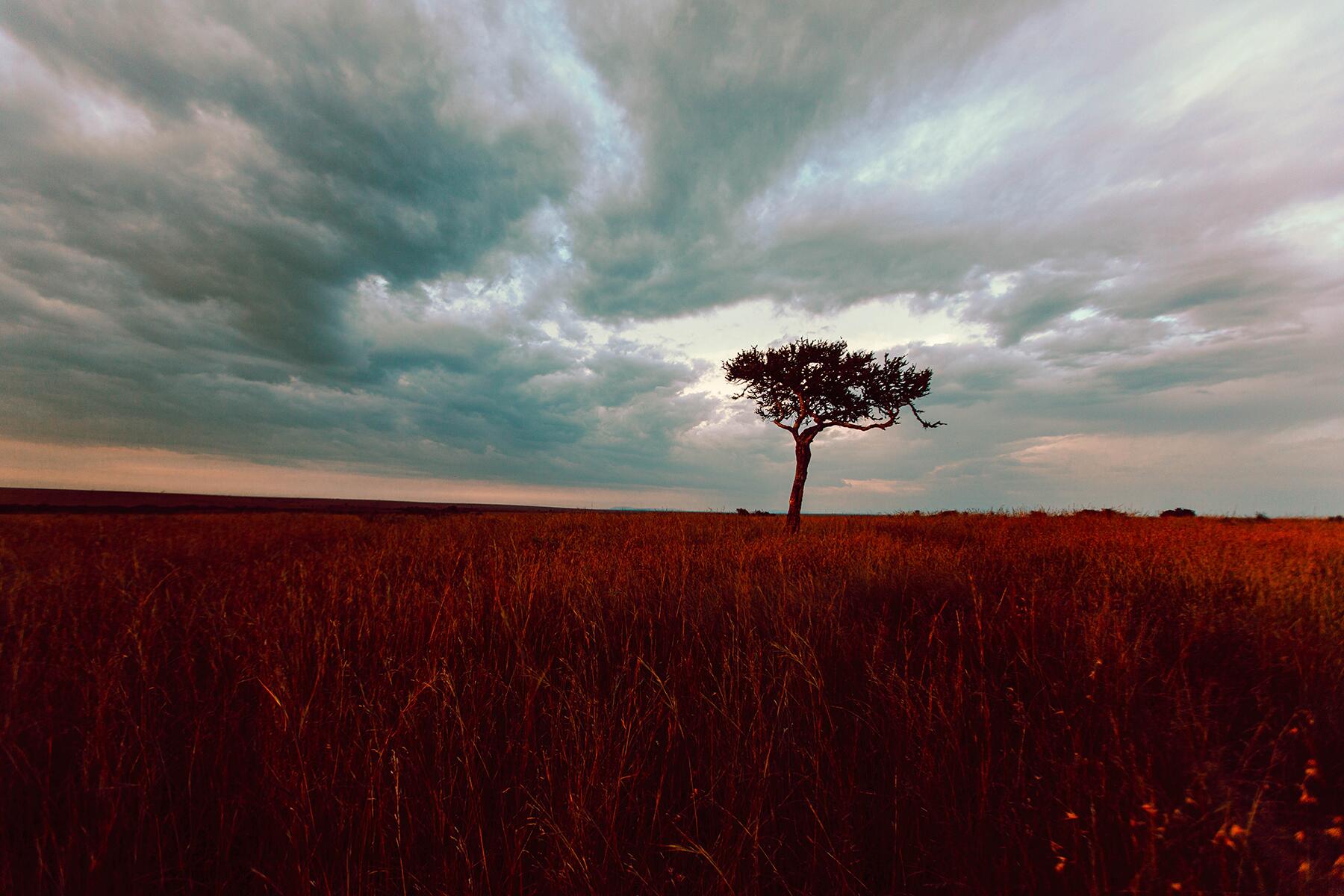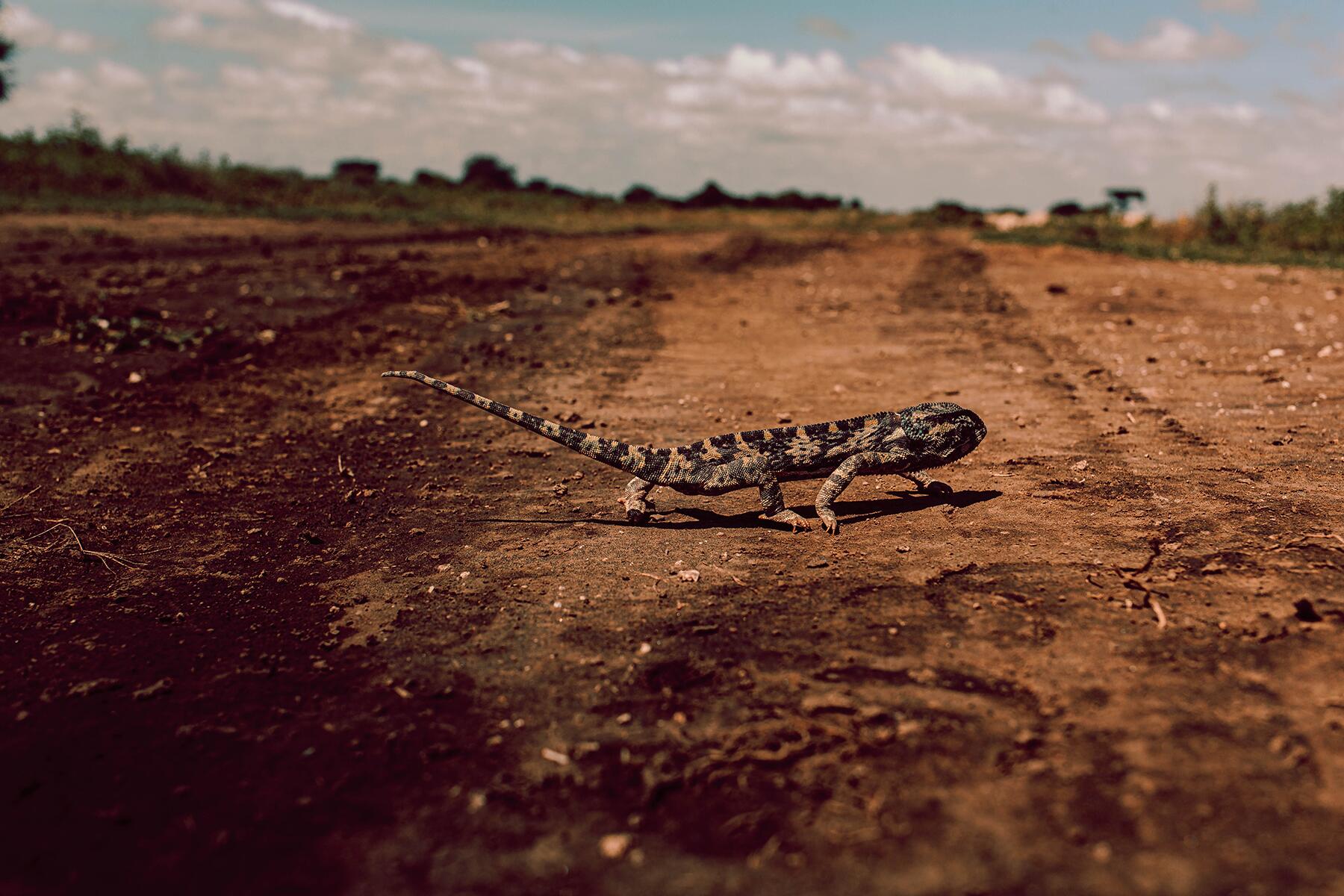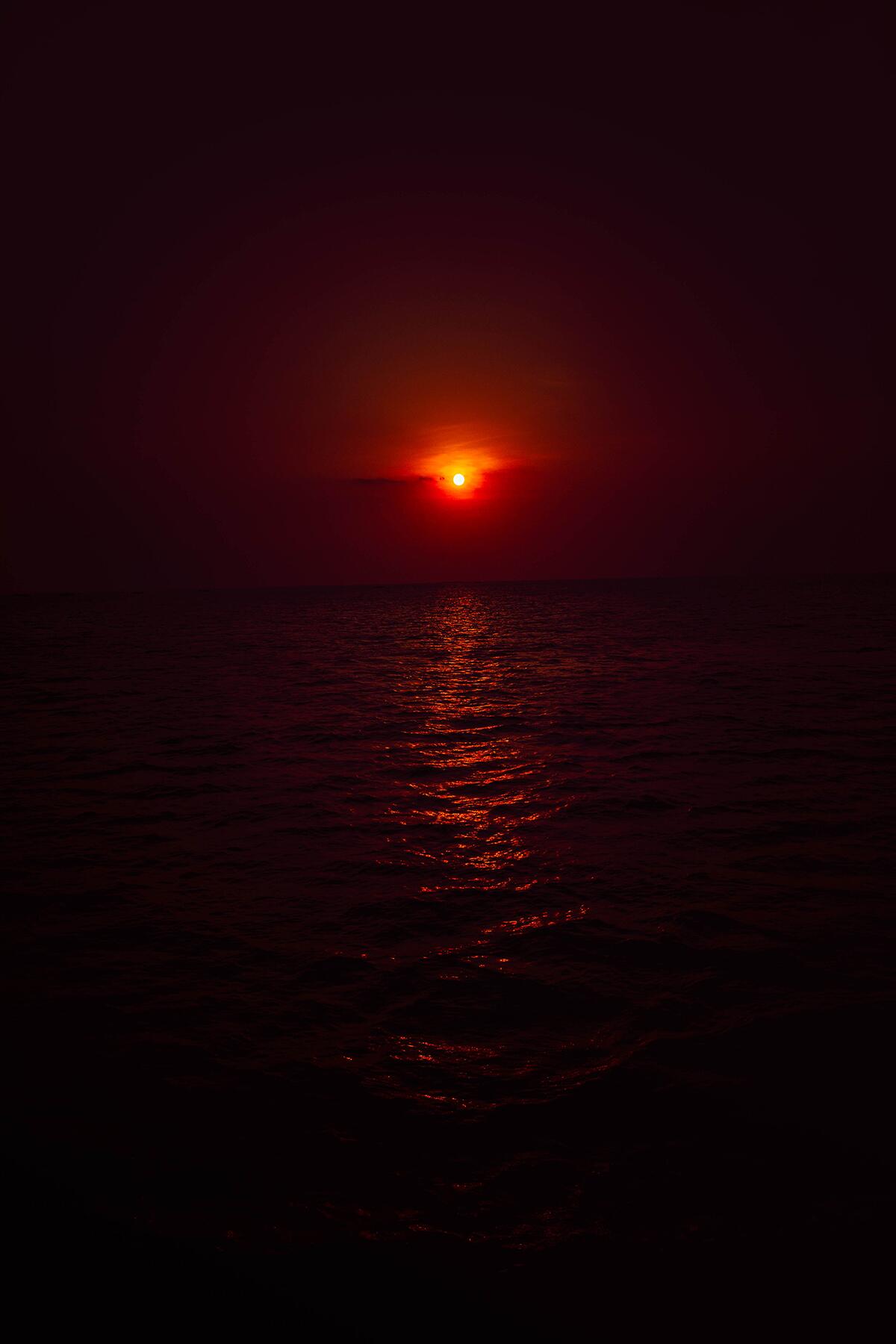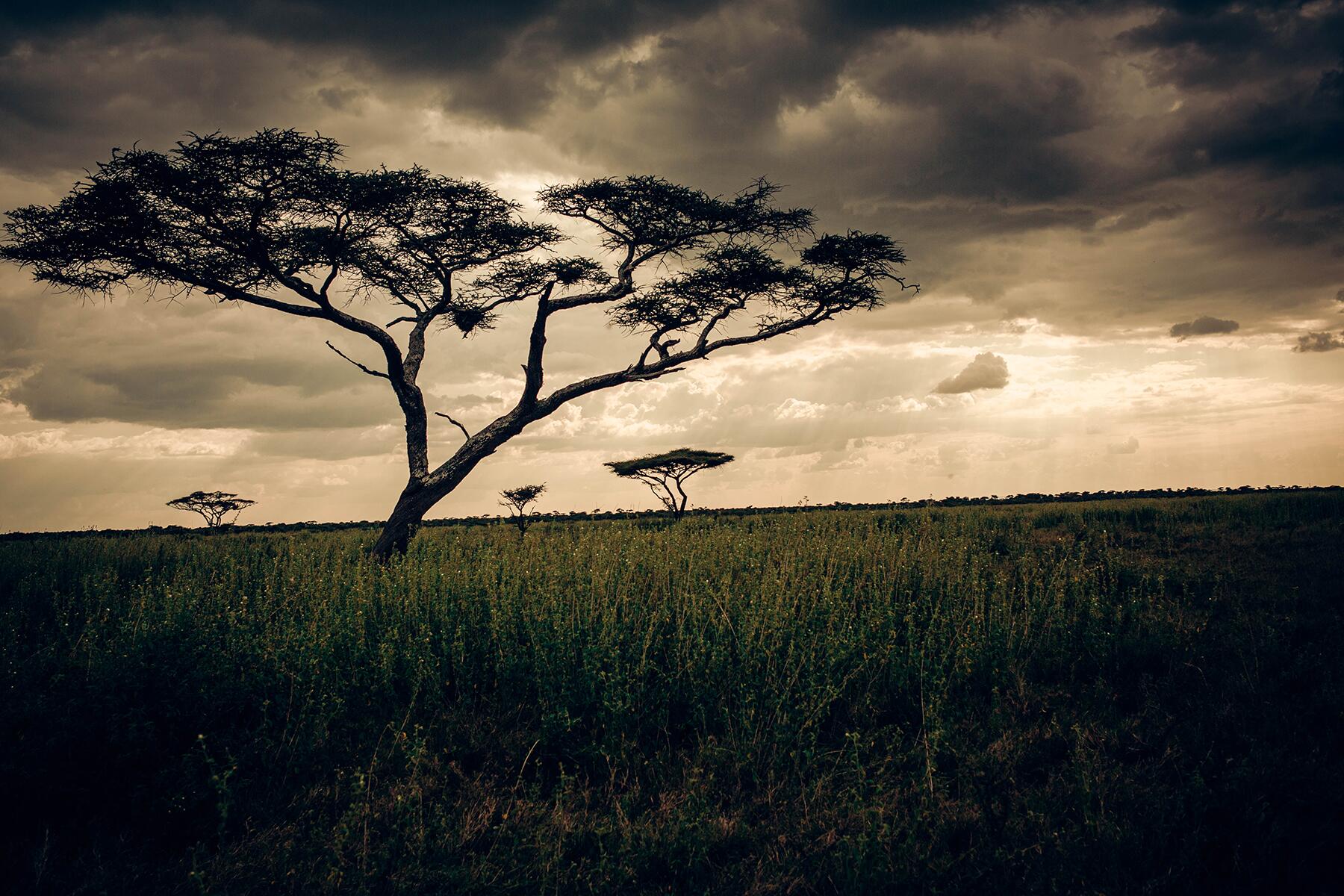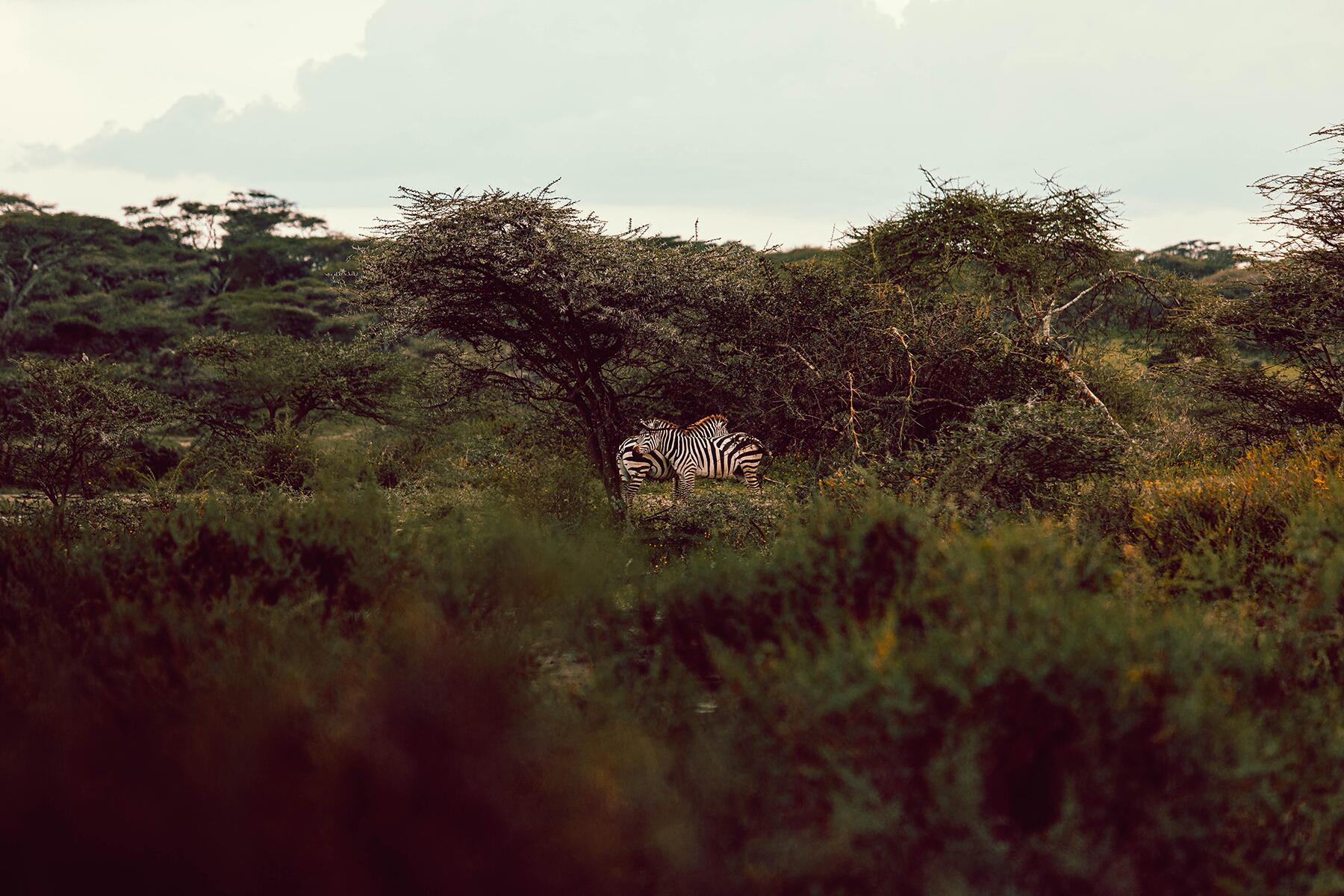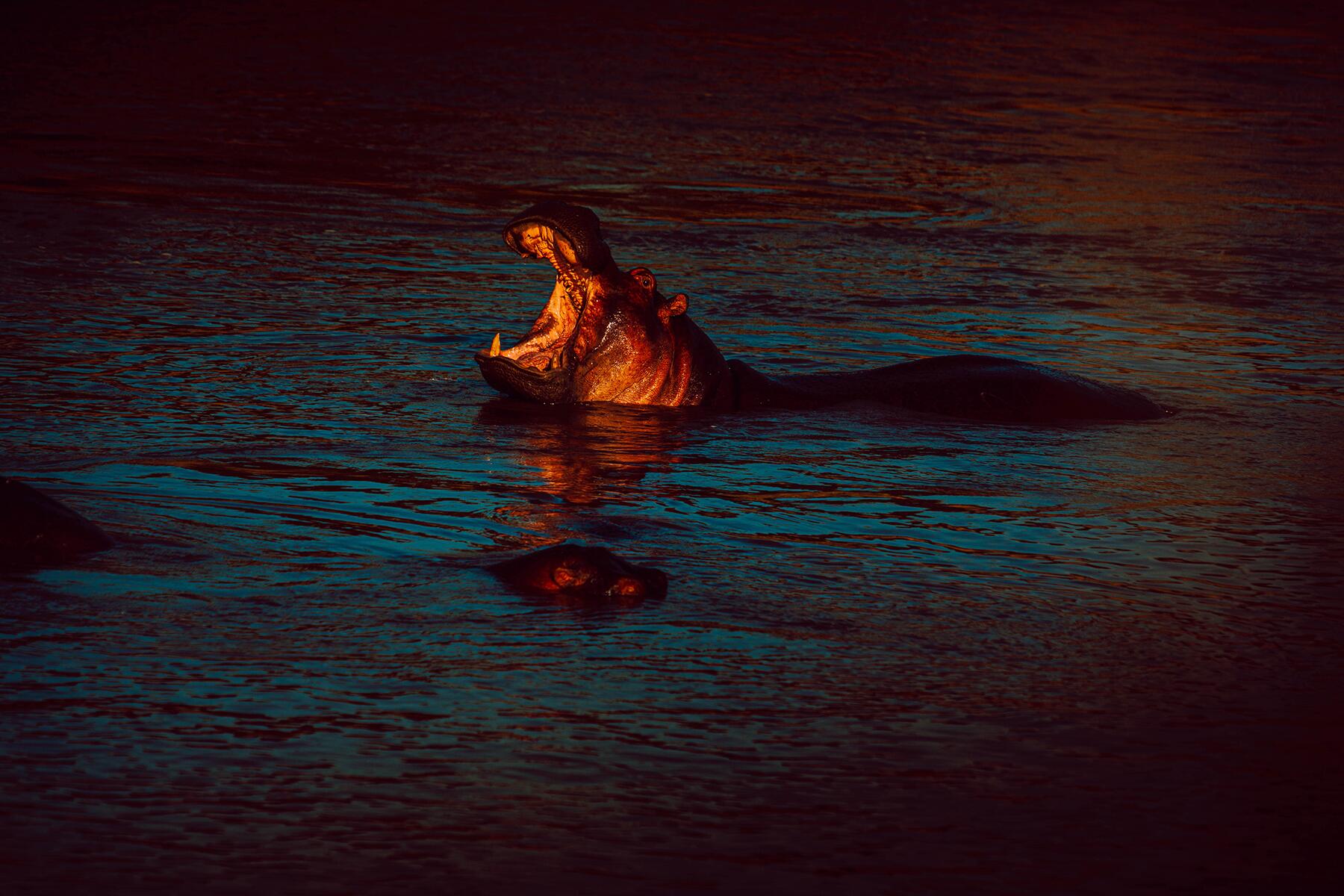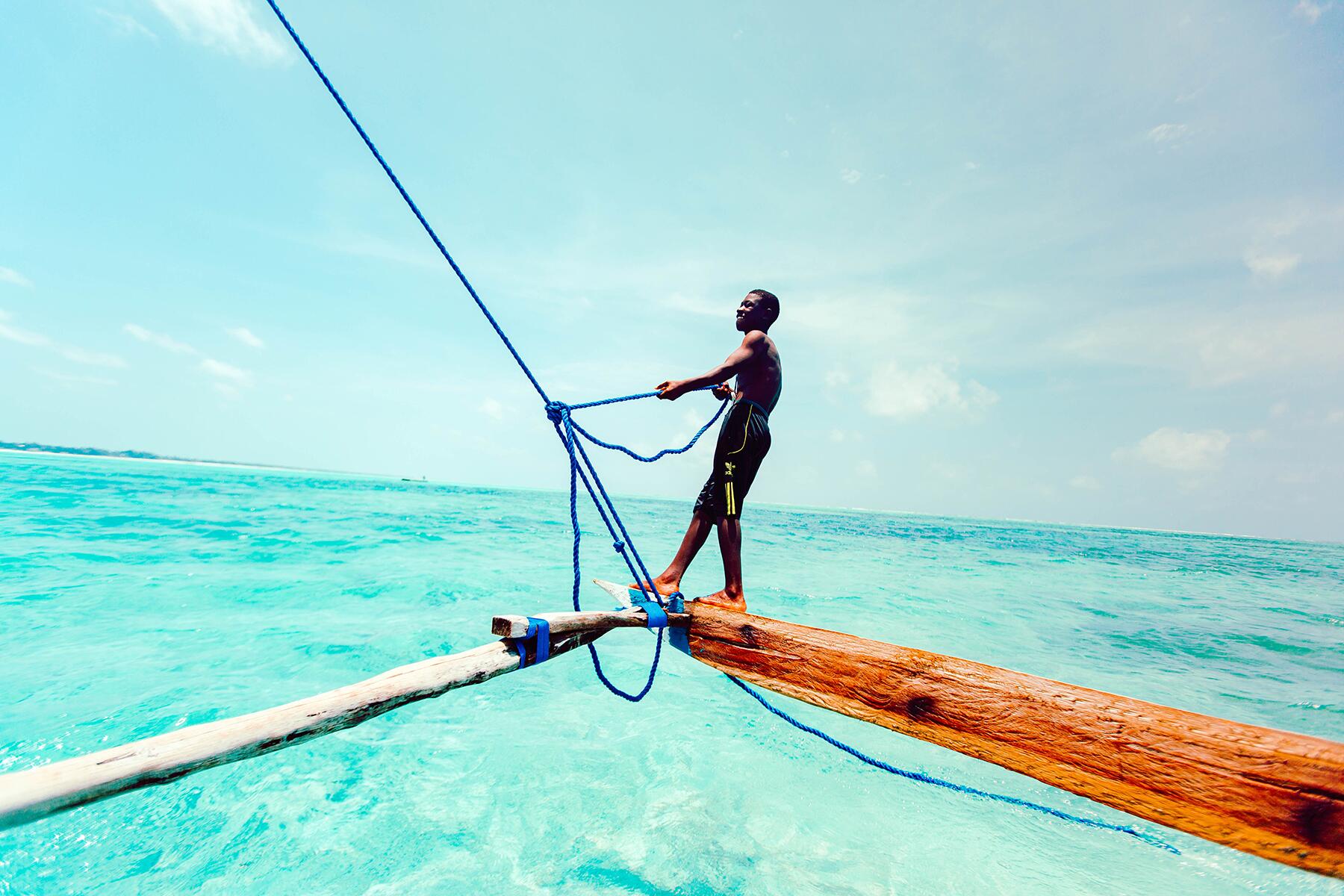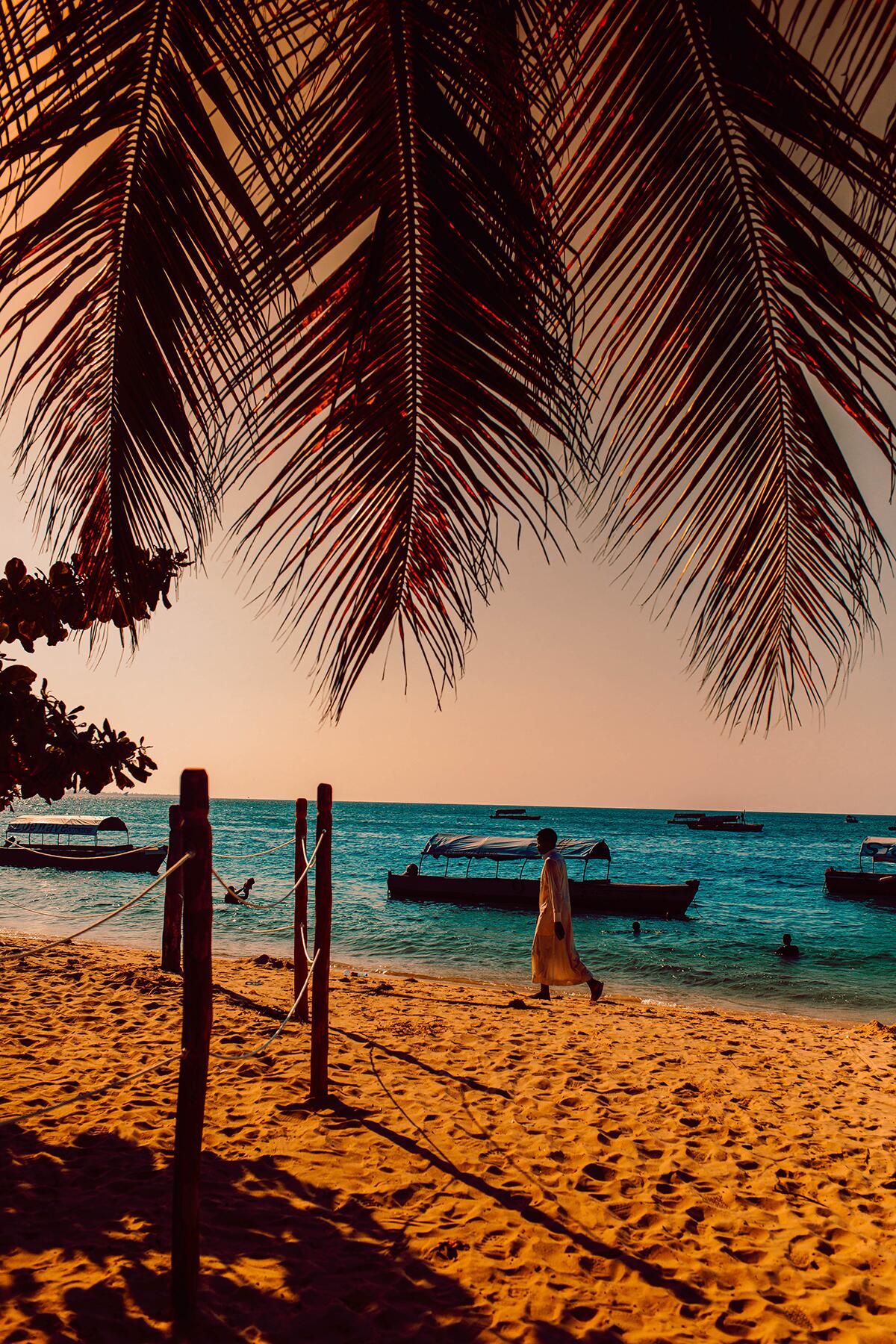From Kenya to Tanzania, one woman holds on to the magic of her first African safari.
If the Italian novelist Cesare Pavese is correct in that “we don’t remember days, we remember moments,” how does one’s memory ossify an experience as “momentous”—that is to say, one marked by a myriad of moments both magnificent and mundane—as one’s first East African safari? Into what neuro-electrical impulse is the beauty of a lion yawning in the foreground of the Serengeti’s setting sun transposed?
As an African woman from Ghana who has long dreamt of going on safari and tasting a different slice of a continent the world so often homogenizes but I know to be remarkably diverse, I set out to encounter the folk and fauna of Kenya with Cheli & Peacock Safaris and Elewana Collection, as well as those of neighboring Tanzania with Asilia Africa. I was aching from anticipation and not yet belabored by the question of remembering.
In my travels, I have found myself preoccupied with the desire to possess the beauty in which I am immersed—the peculiar aroma of a cup of maté in Patagonia, for instance, or the reverberation of adhan (the Islamic call to prayer) over a quiescent Marrakech at dusk. How is one to milk permanence from the transient? Buying souvenirs (the word itself deriving from the French verb “to remember”) is my lesser emotionally evolved attempt at the feat. It should be enough to remember, I remind myself, but the porosity of memory’s membranes renders it an unreliable vault in which to entrust life’s most epic moments. And in the memory, truth may be tempered by a certain quixotic light, and yet, it is only in the memory that beauty truly lives.
Recommended Fodor’s Video
My safari memories are distilled through the prism of color; distinct doses of color. The emerald greens, Maasai reds, and grasses of gold that are alive in my mind’s eye…
The “safari” from New York to Kenya alone was worthy of recollection. Departing from JFK airport, I flew Qatar Airways’ storied Q-Suite business class to Doha and onward to Nairobi. The airline was recently voted the best airline in the world for 2021. The heightened hospitality I enjoyed—both onboard and on the ground, compliments of the airline—made this scenic route a thing of wonder in and of itself: no cheetahs to be seen yet, but copious cups of champagne and a room of my own to dream of dreams to come.
Upon arrival, I found myself in the welcome frenzy of hopping on a bush flight every other day to visit a different region: not one big safari, but in fact many mini safaris thanks to Cheli & Peacock’s expert curation. The areas we visited are bound in my mind by the vastness they have in common, but distinct not only in the game for which they are each renowned, but in the feeling evoked by each landscape’s peculiarity. Each time our iron bird touched the tarmac, the earth felt entirely new; an isomer of itself.
Before embarking on this journey, my idea of safari had long been yoked to sound. No, not the trumpeting of an elephant or the click of antelope hooves, but rather, the buoyant heave and grace of Mozart’s Clarinet concerto’s Adagio. Yes, even the most cynical of Africans, such as myself, cannot resist being swept away by the quixotic winds of the defining cinematic safari, Out of Africa, and the iconic scene in which Robert Redford’s character Denys pilots a yellow two-seater plane. It’s no Q-suite, but easily my second choice of travel would be to go back in time and fly this way.
The aircraft in Sydney Pollack’s film appears to be suspended in the air, sweeping over the savannah, not by the laws of aerodynamics but purely by the forces of Mozart’s composition. And yet, instead of being rooted in the auditory, my safari memories are distilled through the prism of color; distinct doses of color. The emerald greens, Maasai reds, and grasses of gold that are alive in my mind’s eye. The unleashing of these color-coded memories equal reliving, no matter my current state, the exhilaration of my first lion sighting and induce laughter at how every time I mentioned I was from Ghana to any fellow African, the conversation diverged to talk of football and the 2010 World Cup (any football-savvy African knows why).
So, permit me to take you on a technicolor trip, sharing those fragments of one of the most epic odysseys of my life the memory has triaged into chromatic catacombs, for I now understand quite intimately what Robert Macfarlane meant when he wrote: “We tend to think of landscapes as affecting us most strongly when we are in them…but there are also landscapes we bear with us in absentia, those places that live on in the memory long after they have withdrawn in actuality….”
Flamingo Pink Carpets in Amboseli
Photographer Colby Blount and I boarded our SafariLink flight from Nairobi, landing at the Amboseli airstrip around 3 pm. I’d managed to make us miss our morning flight, but Cheli & Peacock dexterously rearranged our schedule so that we’d only miss a few hours of game-viewing. Greeted by relentless wind and a sun high in the sky, we made our way towards Elewana Collection’s Tortilis camp, shuttled by our guide, Jonathan, whose warmth was apparent from the moment he said hello.

One comes to Amboseli for the elephants, and there are plenty of them—over one thousand, to be imprecise—grazing, drinking, and flaring their full “ear span” in the ever-present shadow of Mount Kilimanjaro. But it is the gradient pink carpet of flamingos that first arrested my sight. Everywhere, flamingos—flamingos in the water and flamingos in flight. In a moment, the immediate delicacy of flamingos prancing and preening was pitted against the promised puissance of elephantine hoofs pressing into the earth.
Our first big game sighting was not the trunked and tusked giant. It was, instead, the Maasai giraffe (the tallest land mammal on earth). As the vertiginous creature crossed the red earth toward a patch of greenery, its inclined neck swaying in response to its gait like a rhythmic call and response routine, Jonathan quelled the roar of the engine. We sat in silence, first observing him from the windshield, then from the open sides of the safari vehicle. You never forget your first, they say. How can I forget that brown blotched hide, engulfed by verdant leaves, as he went about his eating.

When we finally did meet Amboseli elephants, pearly-feathered egrets riding in tow, I came to understand just how much a specific guide’s distinctive style and personality colors one’s understanding of what it is to safari. Jonathan possessed a certain intuitive understanding of the elephants of Amboseli National Park; a certain interspecific fingerspitzengefühl—the German word that translates to “fingertips feeling” and meaning instinctive flair—that leads him to know when a herd was in the mood for our gawking, and when one was relaxed enough for us to climb out of the safari vehicle, setting our two legs on the very same ground as the beast’s four. It was Jonathan’s instinct that let us know when spirits were ripe for driving so close to a duo of elephants that I proclaimed with the hushed giddiness of a child, “I can see her eyelashes!”

As a member of the Maasai tribe himself, Jonathan made us feel as though we were meeting his family when we visited the village of Esiteti. The students of Esetiti Primary School (a project supported by the Land and Life Foundation, the charitable face of Elewana and Cheli & Peacock Safaris, which works with communities on conservation projects) were clad in deep-green knitted sweaters. They lifted their voices in song to welcome us, serving as a reminder that we weren’t just visiting some mythical land inhabited only by the tusked and the hooved, but the home of a people first and foremost.
In the village proper, Ntimpai, a young Maasai leader, was cloaked in his people’s traditional sanguine shuka (cloth), his neck and arms festooned in variegated Maasai beads. He leaned and pressed his hand into the crackling, ferrous-oxide-hued, earthen walls of his home as he answered my questions about life in the bush. When I told him I am from Ghana, he began to recount the pain of the 2010 World Cup in which Ghana, then the hope of Africa, missed a fate-altering penalty kick in our quarter-final match against Uruguay. Second to the ravages of colonialism, it would seem that the World Cup moment is easily the continent’s greatest shared grief.
The Golden Grass of Lewa
Asamoah Gyan: that is the Ghanaian footballer who missed that infamous World Cup penalty kick in 2010, and his name was the first utterance of our Elewana guide, Tom, when I mentioned my nationality after we landed in Lewa.

The Lewa Conservancy is in Kenya’s Laikipia plateau, a terrain of undulating hills clothed in short golden grass, punctuated only by the obsidian limbs of desiccated Acacia trees that jut out of the earth like mangled exclamation marks. The landscape is easily one plucked from the hippocampus of artist René Magritte and spread out to dry. In this surrealist milieu, one arboreal carcass twisted straight upward until its arms splayed out as though frozen in a praise dance; another was fully in cambré till its apex kissed its roots. Everywhere, dead trees were dancing.
In this kingdom of resplendent light, we spotted another two species toward our goal of sighting the big five: the fearsome black rhinoceros and the Cape buffalo with its toupeësque fused horns. At first, the rhino was a stygian dot to me, indistinguishable from the surrounding acacias, but with practice and Tom’s encouragement, I grew more adroit at spotting game from a distance.
The thrill escalated when we interacted with wild things at unparalleled proximity and from varying vantage points: Elewana had orchestrated a walking and riding safari. Close enough on foot to a dazzle of the endangered Grevy’s Zebra (the species distinguishable by their thinner stripes and pure white belly), we could hear their breathing as their flesh scintillated in the sunlight. They scattered like light itself when we drew too close. The reticulated giraffes we met while on horseback were no less shy.
On our evening drive, we caught wind, over the static-tinged airwaves, of a cheetah sighting. Tom flexed the truck’s muscles to get us to the spot in time. Basking in the golden hour, a singular cheetah reclined on a mound of laterite earth, her fur’s hue not unlike the grass itself. Her lassitude was not to be interrupted by the gaze of strangers as she steadily perched, the only perturbation of her motionless state an occasional, regal, insouciant twist of the neck, eyes peeled over the plains that she ruled as her demesne.
The Spectral Blue Heavens of the Maasai Mara
Gold too was the grass in the Maasai Mara, our final stop with Cheli & Peacock Safaris in Kenya: green, gold, and tall. The Mara, which we were told means “mottled horizon” in the language of its people, is in many minds synonymous with the notion of safari. And so too is Elewana’s Sand River Safari Camp, to which we drove from the Keekorok airstrip. The camp adheres to a classic safari style with a queen-size, mosquito-netted, four-poster bed and undisturbed views of the Sand River from the tent’s deck.
Gliding through the grass along roads that slice through the veld like imprecise lasers, I was awash in the sense of numinousness. So tall was the grass that we almost missed our first lion encounter. But our guide, Alex, possessed eyesight as sharp as his wit and spotted the camouflaged creature. We stopped and observed the lion buried in the fronds of foliage, its mane one with the Mara grass. Later, we visited other lions in thinner patches of grass, so we could appreciate their sculpted musculature as they strutted. But it is the eyes of that first solitary lion cloaked in the grass that dominates my memory.
Alex, meticulous in his planning, had organized a bush breakfast for us on the banks of the Sand River, overlooking the hippos seemingly unhinging their jaws in the distant water. Yet, choreograph though he could such a special moment, there was no way he could have strategized the most indelible experience that was soon to follow. We were on our final evening game drive through the Kenyan bush and no other vehicle was in sight. The wilderness was our oyster. A storm was threatening. Alex killed the car’s engine. Our tongues tied by wonder, we watched as the grass grew darker from the intimidation of impending rain.
Colby Blount
Thunder lit the airwaves. Lightning cleaved a befogged sky. Then, the heavens blazed forth in a spectrum of blues that melted into flaxen patches of atmosphere. Like a painting, the sky was a swirl of colors—the firmament hung directly over us in deep indigo, but on the horizon, the sky throbbed in sprightly citrine. Somewhere in between, a somber grey connected the poles of this watercolor sky. A brushstroke of lightning burst the tableau open, and the ablution of the Mara began. We listened to the raindrops throw themselves against the grass. It was our final, transcendental delectation of the Mara we would soon be leaving.
Vermillion Flares of Sky in Ndutu
We left the Mara for Nairobi in a cyclone of activity, eager not to miss our flight. After a night spent at the oft-Instagrammed Giraffe Manor in Nairobi, we set off by road with Asilia Africa for Arusha, Tanzania. Congolese/Tanzanian Bolingo music flooded the car, drumming up memories from my childhood of Kanda Bongo Man’s hits being played at parties in Accra. Our time in Arusha sped by like a hurried wave, the frequency of which is only slowed down in my brain when I think of the aromatic, ginger-laden nyama choma (a popular street food of grilled goat meat) we stopped to buy before flying out to Ndutu.
We arrived at Asilia’s Olakira Migration Camp to a chorus of singing voices accented by clapping. This is how Asilia welcomes each of its guests. “Jambo! Jambo bwana!” they sang in Kiswahili: “Hello, Hello Sir!” As the song faded, a sonorous deluge reverberated in its place. Sure, some time had passed between our melodious greeting before the rainfall: a light but tasty lunch of kofta and salad prepared by chef Stanley was had before the sudden downpour. Watching the rain through the “window” of my half-mesh tent – a special feature that allows for sleeping under the stars, a feat I never quite worked up the courage to achieve—was a cosmic experience.

The rains subsided in time for our evening game drive. We cruised over Ndutu’s red soil and through its groves of flat-top acacia tortilis trees until our guide, Hamza, parked our photographic van (a convenient asset that can be arranged for Asilia guests whose goal is capturing wildlife imagery) by a pride of lionesses and their cubs. The cubs ran and tumbled and tugged at tails with their teeth, waggishly playing against the grave backdrop of a sky that bled fiery red as the earth swallowed the evening sun. Like iron being smelted from its ore, the orange-red light poured over Lake Ndutu, the reflection in the water intensifying the weight of the Mars-colored light.
We came to Ndutu to witness the Great Migration of wildebeest, the annual migration of giant herds of grazers across northern Tanzania and Kenya. But as they say, time and The Migration wait for no man. The rain patterns had been unpredictable; the wildebeest—no respecter of human itineraries—had moved on. The following day, after a bone-warming cup of porridge around the camp’s fire in the morning mist, Hamza drove us two hours afield in search of the pulsating sprint of wildebeest (themselves in search of greener pastures), all the while regaling us with stories. But Nature would not be so easily ensnared: the wildebeest had indeed moved on.
Instead of the breadth of scale of thousands of wildebeest in rapid motion, we came to understand the depth of solitude through prolonged communion with a single chameleon we encountered crossing the sandy road. One chameleon and its stride gait is enough to marvel at the melody of motion.
Infinite Green Glades in the Eastern Serengeti
Two days later, we were piercing through the ether in yet another tiny plane, headed towards the Eastern Serengeti. Peering out the smudged window, beneath the scant clouds, I spied a concentration of green unlike any I had seen on this journey. The land was flat in this portion of Tanzania’s Serengeti National Park, the same ecosystem as its cousin across the border, the Maasai Mara. The emerald field was interrupted only by broccoli-head tufts of deeper forest green — the sprinkling of treetops as seen from above.
It was a two-hour drive from the Seronera airstrip to Asilia’s camp, Namiri Plains, perhaps the most iconic safari lodge in the Serengeti, named after a Swahili word for “cat” since the area in which it is located is a former big cat conservation area. The cats may be their calling card, but at Namiri Plains, meticulous modern design is their oriflamme. My tent’s outdoor bathtub called for a mid-afternoon soak en plein air, and the air was rarefied indeed.
In the morning, we drove across the plains in search of a hint of the wildebeest migration. A smattering of the gentle beasts did humor our relentless pursuit, but Namiri remained the land of the big cats. We found intrigue watching a cheetah and her three cubs hunt down a whimpering hare, unable to outrun their instincts. Then later, backlit by a setting sun burning a hole in the sky, a lion arched its back with all the tension of an outstretched bow before it folded its legs to sit, sphinxlike, atop a kopje, the monolithic grey stones that are scattered across the Namiri region. Soon, the sun was so small in the sky that it appeared to be merely a diadem atop the head of the king of bush.
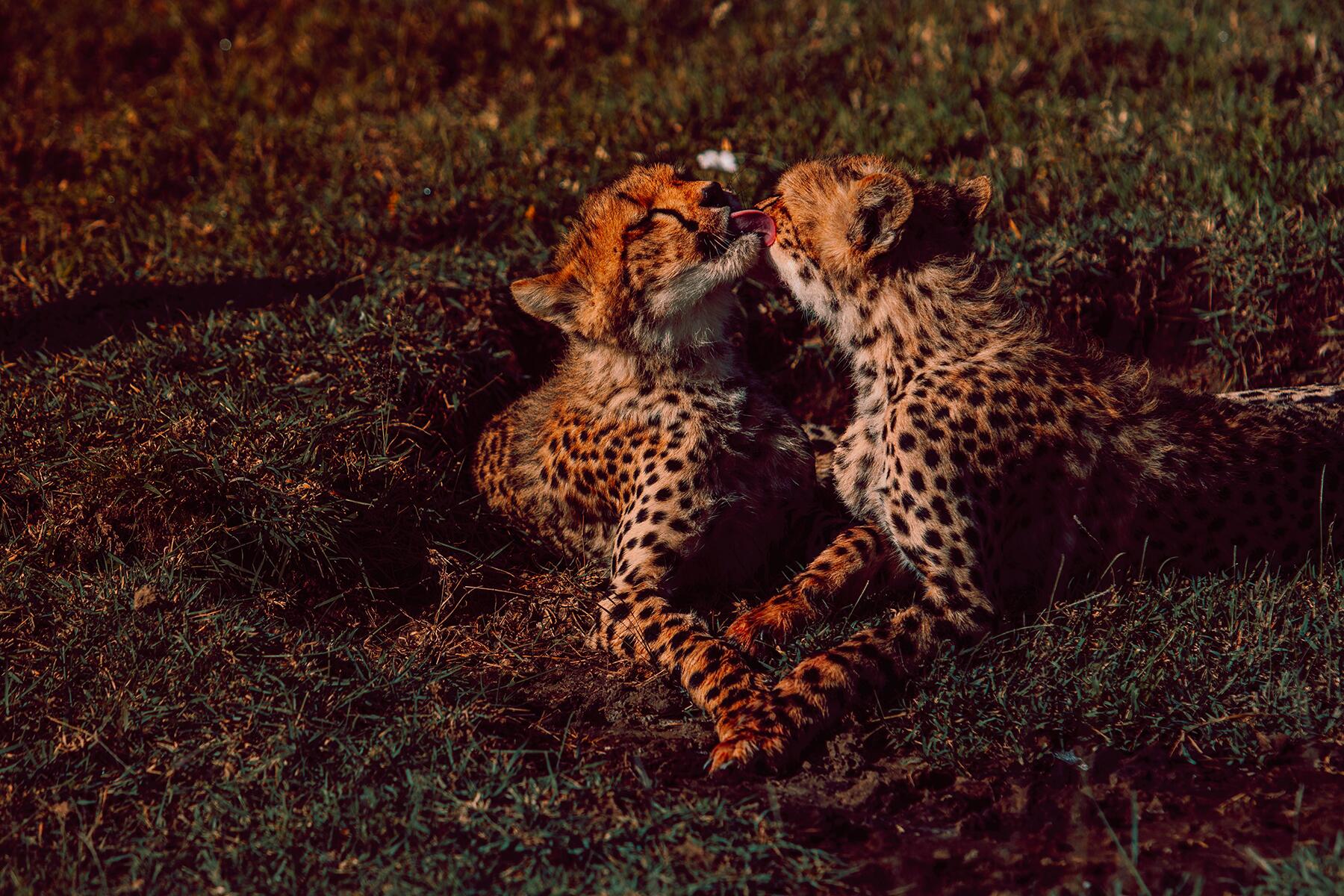
As we drove back to camp, still reeling from the theatricality of statuesque lions at last light, we happened upon a surprise encore. Stanley slowed the car to a stop and pointed. “Look, a leopard!” he whispered. The ever-elusive leopard! The only member of the illustrious “Big 5” we had yet to spot. The lone, dappled cat stood lapping water from a thin, steady stream. And when the leopard grew tired of drinking, the reclusive predator quietly strode off into the distance.
Mud-Brown Hippos of the Mara River
The banks of the Mara River in the Northern Serengeti were our last stop in mainland Tanzania. Our final Asilia guide, Daniel, picked us up in the red-hot, mid-afternoon heat from the Kogatende airstrip. It was the usual bumpy ride to Asilia’s Sayari Camp. As always, there was singing to welcome us to camp, and by now, I, too, knew the words and could sing along.
A certain aridity pervaded the air in the Northern Serengeti, but our home at Sayari Camp was an oasis, complete with the promise of relaxing massages to soothe the aches of brisk game drives. Daniel drove us to the Mara River, where mud-brown hippos populated the water in impressive numbers. Then brown again: the mud in which our vehicle got stuck as we drove towards bush breakfast. Well-trained and intuitive, Daniel set up a table and morning feast in the grassland, and while we ate, he freed the car from the sludge with nothing but a plank of wood and prestidigitation.
At dusk, as the sun sank beneath the horizon, we climbed a copious kopje for our final sundowner drinks: a Serengeti beer for Colby, a Stoney Tangawizi ginger beer for me. The sun was setting on our 14-day, once-in-a-lifetime safari with no particular pomp or pageantry, just simple grace. Just as T.S Eliot writes in his poem The Hollow Men, “This is how it ends, not with a bang but with a whimper,” our safari was drawing to a close with a whisper of gratitude. Confronted by the reality that we would soon swap the freedom of ceaseless rock-studded plains for the confinement of urban life, standing atop a giant rock in the Serengeti took on burdensome significance.
Back at camp, the moon rose, and the lush trees grew black in the night, standing like stout skeleton sentinels over a shadowland. A fire (Bush TV, as they call it) was blazing in the heart of the campground, its orange tongues licking the dark air. Asilia’s staff—now our friends —had gathered to chat with us in the starlight. In the glare of the flames, we laughed a lot but were also often silent.
Aventurine Adventures on the Seas of Zanzibar
Many a safari culminates in a coastal addendum for rest and relaxation. Zanzibar, the main island in the Tanzanian archipelago, is a gem in the jewel-toned Indian Ocean and was an easy choice of final destination since Qatar Airways offers a daily service direct from the island to Doha, simplifying our route back home.
In stark contrast to the dryness of the northern Serengeti from whence we came, once the turquoise waters that surrounded the island became apparent from our plane window, our moods shifted: Zanzibar was to be its own manner of adventure.

From the balcony of my room at the Park Hyatt in Stonetown—the island’s historic, labyrinthine city center—I watched a wooden boat bob along the ocean until the sound of young footballers indulging in an evening shoreside match interrupted my reverie.
The following day, we departed for Paje, a village on the east coast of the island, driving through thickets of forest until we arrived at the cozy White Sand Luxury Villas where my chalet overlooked the green sea and the swirls of windsurfers’ sails above it. On the beachfront, we met Samir, who owned a fishing dhow—a traditional wooden boat of little frill yet mighty character. While his is not a tourist boat, we’d love to go fishing with him, we say. “It’ll be an adventure!”
He etched his fee for the experience in the sand, and we negotiated with an air of persiflage. He couldn’t accompany us, though, he had other plans. He left us in the able hands of four local boys —Amani, Muhamed, Mukrim, and Abrahim—the oldest of whom couldn’t have been a day over 16.
As we set sail, the cloudy water that churned at shore transformed into placid glass. Further asea, Amani dropped a stone to anchor the boat, and the boys began a nimble interplay of symbiotic activity, collectively folding the mottled white, fraying sail in grand swoops. With the sail gone, there was nothing but aventurine-colored sea and sky before our eyes.
The boys pulled out wire and a mound of dead worms from a yellow plastic bucket. Hooking on their bait, they each threw lines into the deep. The rewards were modest—a small, flat black and white fish, as I recall. Muhamed, the youngest lad, much preferred to swim anyway. Standing at the tip of the dhow, he hurled himself into an impressive if imperfect freeform backflip, spreading his joy as if by osmosis into the reverberating water. He disappeared like Bruegel’s Icarus into the water. Unlike Icarus, he resurfaced, grinning radiantly.
Indeed, the water in Zanzibar isn’t always this pellucid aquamarine. Back in Stonetown, the west coast sea took on a graver lapis color and a faux viscosity, as seen from a sunset dhow cruise with Nakupenda Isles Safari. As we drifted, the boat’s drummer, a violinist, and a singer sweetened the breeze with traditional taarab music.
“Jambo! Jambo Bwana,” the final song began.
“ I know this one,” I thought to myself, rising to my feet to dance.
“Habari gani?” the song asked in Swahili. “How are you?”
“Mzur sana,” the song responded: “Very fine.”
Very fine indeed.
A Rainbow of Remembering
From the current vantage point of my bed, trying to hold on with granularity to as soul-stirring an experience as three weeks on an East African safari, the lines between moments blur, not unlike the gradient of that Maasai Mara stormy sky. But the colors, the colors remain, giving shape to the kaleidoscope of images—a lion arching its back, the flutter of the fronds of an elephant’s eyelashes—that feel as real today as they did then.





